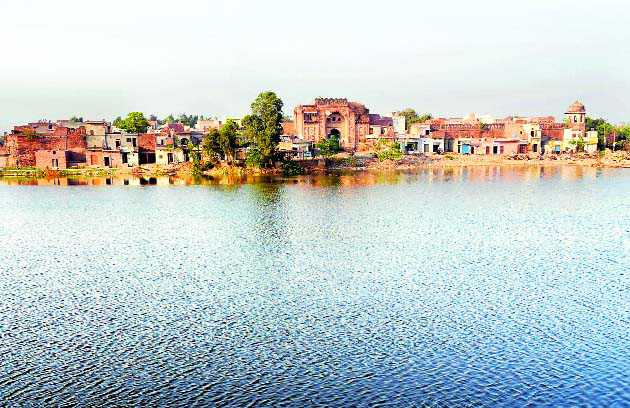There is good reason to halt at Karnal and travel back in time: the city that takes its name from Mahabharata famous almsgiver Karna was a favourite among ‘Nawabs’ and the colonial British. The erstwhile Grand Truck Road (GT Road), now the National Highway-1 from Peshawar to Delhi, passed through the old city.
It is the birthplace of Pakistan’s first prime minister Liaquat Ali Khan. One of his ancestral buildings is situated in the city, which is known as Jarnaily Kothi, and is lying in a dilapidated condition. Banani Bhattacharyya, deputy director of the Directorate of Archaeology and Museums, says her department has been preparing a list of monuments in the state.
The city, midway between Delhi and Chandigarh, was a British Army cantonment in 1811. The city railway station bears the testimony of the British heritage. Some of the monuments lie neglected, while others are being maintained by the Archaeological Department and district administration. Residents say the present DC camp office had a British origin. The Karnal Club built in 1893 owes its existence to British engineer Arthur Atkinson.
Karnal was one of the biggest districts in the united Punjab. Kurukshetra, Kaithal and Panipat districts were a part of it. William Fraser was the city first Deputy Commissioner in 1819. The outbreak of malaria forced the British to shift their cantonment to Ambala. European soldiers, who died following the malaria in 1842-43, lie buried in a cemetery near the Cantonment Church Tower.
Another heritage building is Victoria Memorial Hall, built in 1901. Later it came to be known as Gandhi Memorial. The Housing Board has issued a tender in an attempt to preserve it.
In the eighteenth-nineteenth centuries, Karnal was a city of nawabas. The present building of Sainik School, Kunjpura, belonged to the last Nawab of Kunjpura, Ibrahim Ali Khan, who built it in the year 1900 for the marriage party of his daughter. The property went to the Defence Ministry as the nawab migrated to Pakistanand died in Lahore in 1952.
Besides, it has a ‘nawab chhatta’ (several houses of nawabs in a street), where nawabs enjoyed mujra. “I came to Karnal in 1969 and was very impressed to see the Chhatta’. The design was quite attractive,” said IJ Bharti, a 77-year-old resident of Sector-13. Karan Tal Park is believed to be the place where the son of Kunti prayed to the Sun God and donated gold in the temple of Goddess Kali. Chief Minister Manohar Lal Khattar, who belongs to the city, has said the state government will develop the city as an international tourist spot. The main attraction would be a statue of Raja Karna around 18 feet tall, which has been installed in the centre of the pond. “The project to beautify the pond has been given to the municipal corporation and the Haryana Urban Development Authority (HUDA),” says Renu Bala Gupta, the city Mayor. A battle between Muhammad Gauri and Prithvi Raj Chauhan was fought in 1191 in Taraori (earlier it was Trien), in which Chauhan defeated Gauri’s army, while in 1192, Muhamaad Gauri again attacked, but this time he defeated Chauhan. The fort of Prithvi Raj Chauhan is located in Tarori, but is heavily encroached upon.
A sacred Mazaar of Bu-Ali-Shah Qualandar, who was the second-in-line after Prophet Mohammad, is also in the city. Another dargah of Qualandar Shah is situated in Budha Khera village. It is believed that Bu-Ali-Shah Qualandar prayed in the Yamuna for 12 years. The followers of Qualandar Shah fought over his body after he died. His body was laid to rest at Panipat. “I visited Taraori fort to see if we could do something to preserve its past, but people have encroached upon the fort. Even the fort’s old boundary wall is demolished,” says Banani Bhattacharyya, deputy director of the Directorate of Archaeology and Museums.
Unlock Exclusive Insights with The Tribune Premium
Take your experience further with Premium access.
Thought-provoking Opinions, Expert Analysis, In-depth Insights and other Member Only Benefits
Already a Member? Sign In Now










